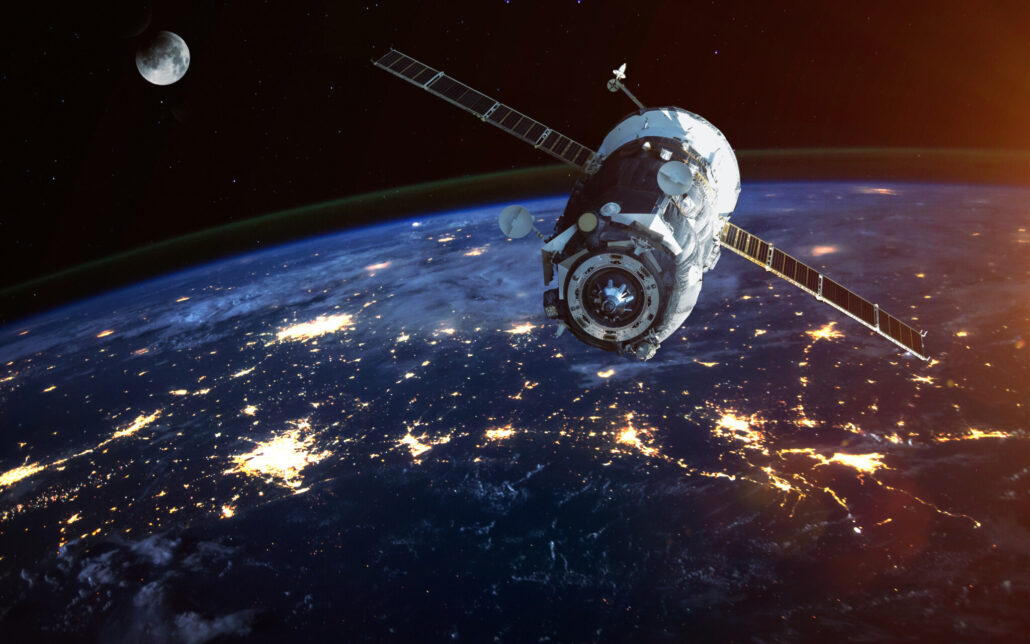Integrated Photonics and MEMS for Space
Integrated Photonics and MEMS for space serve a uniquely challenging application. No conditions are more taxing than those in space–extremes of temperature and radiation as well as issues surrounding vacuum conditions and microgravity.
The need for microsystems for space applications
The cost of launching payloads into space is a serious driver for microsystems applications; launching even to low earth orbit costs around $10k per kilogram. As well as cost, power consumption must carefully managed. The power available on even a relatively powerful modern spacecraft is typically a little over 1 kilowatt.
The challenge for developers of space devices and components therefore is always to reduce weight, power and cost. Beyond these challenges, operating in space requires excellent reliability. Given the harsh environment, the high costs of launching and the almost zero likelihood of being able to recover from a damaged or faulty system, it is vital that space components work well and stay working.
Integrated photonics space applications
Telecommunications
Microfabricated beamforming and beamshaping components play a key role in enabling next generation reconfigurable components for broadband communication in point-to-point and broadcast systems.
Satellite Communication
LioniX International’s photonic beamformers use thermo-optic or stress-optic switches to modulate signals in a photonic integrated circuit (PIC) chip and can be built with integrated optical light sources, modulators and detectors for RF-in RF-out functionality. Photonic beamformers offer wide-angle, broadband beam steering with low power consumption and solid state operation.
Earth observation
Microsystems are used for beamsteering in applications for synthetic aperture radar (SAR) and LIDAR for earth observation and atmospheric sensing. Here they offer high speed solid state beam steering in small, robust modules.
Why MEMS for space applications?
Miniaturization
In driving down cost, weight and power consumption, MEMS provide great opportunities for space applications. With their microfabricated structures, MEMS are by definition some of the smallest realizations of mechanical devices possible. And with this miniaturization of function comes a corresponding miniaturization of power consumption.
Integration and co-packaging for space MEMS
Further miniaturization is possible with MEMS and microfluidics devices because they interface so well with each other and with microelectronics. The wafer scale fabrication process these technologies have in common open up the possibility to combine functionality into hybrid modules. MEMS can very easily be integrated into sub-modules alongside RF components to increase functionality.
Robustness and reliability
Whilst not inherently more robust than bulk machined components, MEMS devices can be hermetically packed during fabrication to shield fragile parts. On the other hand, the integration of fluidics and electronics and mechanical components in optofluidic devices and MOEMS for example, leads to significant increases in robustness.
MEMS space applications
MEMS, Optofluidic and MOEMS devices have several important applications in space across science, defense and commercial sectors. Key areas include:
Space systems and flight simulation using MEMS
Miniaturized pressure sensors, inertial sensors, flow sensors and temperature sensors are used in ground-based simulations and in for in-flight management of on-board systems.
Here MEMS are used in attitude adjustment, propellant gauging, propellant flow management, leakage testing thermal and environmental control and in onboard life-support systems.
Scientific applications and instrumentation
MEMS and other microsystems offer small form factor instruments with very tightly controlled specifications that benefit from low power consumption. They are therefore idea for space-based scientific instruments. Examples include:
Biotechnology for space
The combination of MEMS with optical and microfluidic technology is particularly powerful for astro-biological applications including:
- lab-on-a-chip, system on a chip, bioreactors
- Biosensors and bioassays – based on absorption, refractive index, fluorescence.
- Capillary electrophoresis
Chip-based sensing
- pH sensors, conductivity sensors, fluorescence sensors, gas absorption sensors
- Micro spectrometry
Reconfigurable instrumentation and actuators
- Microfluidic cooling
- Programmable optical systems, gratings, apertures and slit masks for astronomical observation
- Mechanical actuators for space rovers and probes
MEMS for space at LioniX International
The high degree of customization possible for MEMS production at LioniX International is well suited to specialized, low volume MEMS development for space based applications. Through many hundreds of hours of customer projects and European research collaborations we have developed expertise in a number of key areas for space based technology including:
Lab-on-a-chip/system-on-a-chip
LioniX International’s complimentary expertise in photonics, microfluidics and MEMS is particularly valuable for chip based bioanalysis systems. In the Life Marker chip, LioniX International used a wide range of fabrication techniques to create a lab-on-a-chip system designed to look for traces of life on Mars. The chip included reaction chambers, fluid channels, in-and outlets, conductivity sensors and a configurable rotary valve, as well as an integrated evanescent field optical sensor.
Further expertise in chip-based bioanalysis includes capillary electrophoresis, an electrokinetic separation method used to determine the origin of biomolecules in space.
MicroFluidic Cooling
Micro electronic systems generate a lot of heat. Managing this heat in space can be challenging. LioniX International’s expertise in microfluidic integration with electronics is enabling microscopic systems for temperature regulation in space.
Biosensing
Photonic chip biosensors are a core focus for LioniX International. The combination of miniaturization, sensing automation and high degree of integration of functionality make photonic biosensors ideal for space applications. LioniX International has pioneered the use of interferometric refractive index biosensing. We also produce biosensors based on biofunctionalized ring resonators.
Other chip based sensing
We produce a wide range of sensing technologies integrated into chips. These devices can be very small, often in the order of millimeters. They benefit from high degrees of integration with other technology (electronics, fluidics, photonics). We have built sensors for pH, conductivity and gas flow.
Spectrometry
We produce micro spectrometry systems using integrated photonics based on silicon nitride waveguides. Additionally, we have also developed hybrid tunable lasers for use in spectrometry. Amongst other applications, these lasers are valuable as so called “light actuators” for in flight calibration of space based spectrometers.

